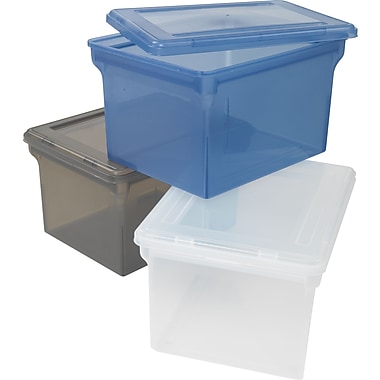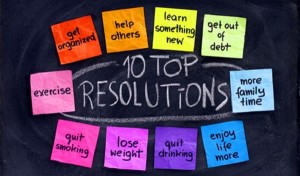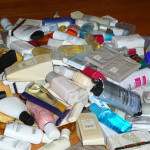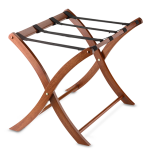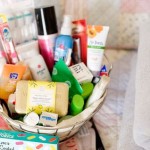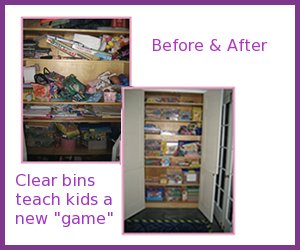Organization is Easier Before the Chaos!
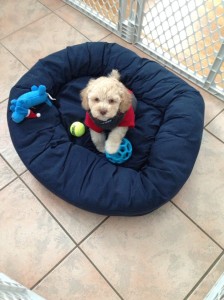 Many joke that getting a puppy is practice for having a baby. While you can’t really compare the life impact of bringing a baby into the world to welcoming a pet into your home, they do each require their own special kind of preparation & organization.Â
Many joke that getting a puppy is practice for having a baby. While you can’t really compare the life impact of bringing a baby into the world to welcoming a pet into your home, they do each require their own special kind of preparation & organization.Â
Preparing your home for a puppy may even be more work, for one major reason- time before the chaos strikes! A puppy is still relatively small and will nap a lot, but is also mobile, and therefore immediately prone to getting into trouble! Even the most organized home may need some “puppy proofing” adjustments.
Â
Let’s Go Room by Room to Get Organized
In the Entryway:
If your entry is a catchall for lots of shoes, bags, and more, you’ll want to rethink the area. An all-encompassing unit would certainly do the trick, (provided the bins don’t have too much clearance on top for puppy noses to get into), but it’s an investment. Ikea offers some less pricey options with slim profiles, good for smaller spaces, as does The Container Store. If new furniture isn’t feasible, repurpose baskets or bins that keep shoes off the floor (and out of the pooch’s path!)
While we’re talking about the entry way, designate a spot for puppy essentials- leash, waste bags, and training treats. They could be in a basket on a table or in a front closet or mud room, depending on set-up of your home. Wherever they live, make sure they’re handy because when you’re in the house-training phase, accidents can happen quickly!
In the Kitchen:
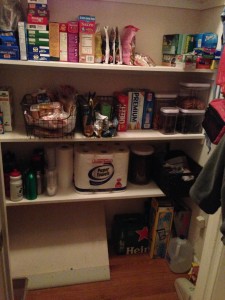 New pet owners may be surprised to learn of how many foods that are bad for dogs. Transfer items with harmful ingredients to pantry containers with lids that a puppy won’t open. Oxo Good Grips Pop Top containers are great–durable AND they’re spatially economical, because they’re square, not round. The Container Store also offer lots of options.
New pet owners may be surprised to learn of how many foods that are bad for dogs. Transfer items with harmful ingredients to pantry containers with lids that a puppy won’t open. Oxo Good Grips Pop Top containers are great–durable AND they’re spatially economical, because they’re square, not round. The Container Store also offer lots of options.
Rearrange your pantry so that the low shelves house impermeable or non-food items, such as canned goods or spare trash bags. No need to tempt fate with boxes of spaghetti or bags of beans!
Transfer dry dog food into a plastic container with a screw top or locking latch top. Nothing with a wimpy lid that could pop off if puppy manages to topple it!
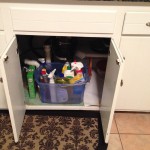 If you keep cleaning chemicals under your sink, as many of us do, consolidate them into a sturdy plastic bin. If the cupboard door is left open, they’ll be more protected- You definitely don’t want your puppy licking or chewing on anything and getting sick 🙁
If you keep cleaning chemicals under your sink, as many of us do, consolidate them into a sturdy plastic bin. If the cupboard door is left open, they’ll be more protected- You definitely don’t want your puppy licking or chewing on anything and getting sick 🙁
Get a sturdy trash can with a lid; ditto for bathrooms.
In Family Areas:
As with very young children, small objects and toys are choking hazards for puppies. Corral toys and other small items into baskets that are off the floor.
Keep puppy toys in a low but sturdy plastic bin (*not* a basket- too chewy!) so they’re accessible.
In the Bedroom:
In your own bedroom, keeping shoes in bins or in closed closets is key. Likewise, keep purses and other accessories off the floor. This may mean some closet reorganization, but at the end of the day, everything needs to fit and the door must close.
In Bathrooms:
Get into the habit of closing the toilet seat (a good habit, regardless!), so your new family member doesn’t try and drink out of the bowl!
Finally, All Around the House:
- Survey your shelves and move anything that might look like it’s good to chew on, like baskets or overhanging books, off the low shelves.
- If you have area rugs that can be rolled up, you’re likely better off doing so while your puppy is in the house-training phase (to save yourself from having to buy new ones once they’re house-trained!)
- Put electrical cords behind furniture or in boxes. This is key, as to someone who spends much time close to the ground, these cords can look mighty tasty.
- Use bitter apple spray on furniture legs to discourage chewing.
- Research your house plants, and make sure that yours are non-toxic. Even if they’re safe, it’s a good idea to move them to higher ground in the short term.
- Walk around your house and identify any nooks and crevices that a puppy would like to cuddle in or under, and clean them out. Make a mental note of these places, so you know where to look if your puppy is hiding.
- Screen low windows and consider adding dowel rods to prevent falls when windows are open.
Calling All Dog Owners
What did we miss? Experienced dog owners, please chime in and leave a comment if there’s some helpful hint, or something unique or unusual that you discovered as a first time pet owner!
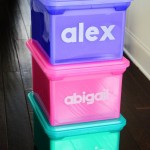 Recently we’ve addressed organizing paper for grown-ups: mail, important documents, and tax paperwork. But anyone with kids knows that the amount of paper that they generate can be just as great, and keeping it organized presents its own kind of challenge.
Recently we’ve addressed organizing paper for grown-ups: mail, important documents, and tax paperwork. But anyone with kids knows that the amount of paper that they generate can be just as great, and keeping it organized presents its own kind of challenge.
